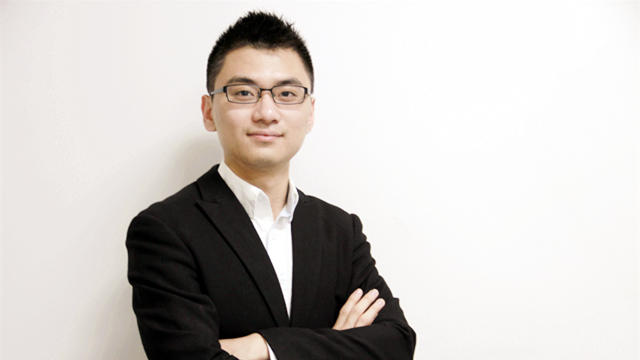新视野大学英语3读写教程课文unit8 Legal and Moral Implications
Section (C)
Twins Six Years Apart
Scientists in Scotland recently announced that, for the first time, they have cloned an exact copy ofan adult mammal. The cloned lamb, named Dolly, has the exact same genes as the adult sheep fromwhich she was cloned. In other words, the two are identical twins; only Dolly is six years younger. Thegoal of the Scottish scientist Ian Wilmut is to develop a way to raise identical sheep that producemedicines for humans.
A week after Wilmut's announcement, other scientists revealed that they had used a differenttechnique to clone monkeys, which are much more closely related to humans. These accomplishmentsimmediately set off a worldwide debate: Should scientists be allowed to clone animals? Is cloningmorally wrong and dangerous — or is it a valuable research tool?
All attempts at cloning were largely unsuccessful until 1984. That's when a scientist in Denmarkseparated cells from a sheep's embryo (胚胎). An embryo is an early stage of development in whichcells are busy dividing and "transforming" into specialized cells like skin, eye, or muscle cells.
Unlike a skin cell, an embryo is on its way to becoming a complete living thing: The Danish scientistcombined an embryo cell with an egg cell from another sheep. He put the combined cell — then a newlygrowing embryo — into a grown female sheep. To much surprise, the embryo grew into a baby lamb.
Since then, other scientists have used embryos to clone cattle, pigs, goats, rabbits - and, now, evenmonkeys.
So what makes Wilmut's sheep unique? Instead of using early-stage embryo cells, Wilmut used cellsfrom the udder (乳腺) of an adult sheep. In theory, that's like using one of your skin cells to clone a newyou!
Wilmut knew that each cell of the body contains a full set of genetic instructions — instructions togrow a complete individual. (The only exceptions are egg and sperm cells, each of which contains halfthe genes to grow a new individual.) Once cells have specialized, on their way to becoming skin or eyeor udder cells, most of the genetic instructions to make a full being are turned off. Until now, scientistsbelieved that specialized cells could not be used to form a complete living thing.
Wilmut proved them wrong. He found a way to take an udder cell and make it grow into a new clonedlamb. An amazing fact: Dolly has no biological father.
Wilmut's success didn't come easily. He has been studying this problem for more than two decades.
Last year, he used embryos to successfully clone two sheep. Then he went ahead to clone an adultsheep. But, of 277 udder cells he fused with egg cells, only 30 began to develop into embryos. Heimplanted 29 of those into female sheep. Only one adult gave birth to a lamb.
Other scientists have jumped in to repeat Wilmut's experiment with other animals, including cows.
And that's what has scientists, animal-rights advocates, politicians — even President Clinton — up inarms. How far, they wonder, will cloning go?
Wilmut maintains that cloning animals has tremendous potential for helping people. Cloned sheep, hesays, could be used as living drug factories. Scientists could "engineer" sheep that produce drugs intheir milk. And by altering the proteins on the surfaces of animal organs to make them more likehuman organs, scientists believe they may be able to create a plentiful source of organ donors forpeople.
Why not clone humans as organ donors? Theoretically, Wilmut says, there is no reason histechniques couldn't someday be used to clone people. Think about the possibilities: a whole basketballteam of Michael Jordans, a scientific panel of Albert Einsteins, a movie starring and co-starring BradPitts.
On a more serious note, some experts argue that couples who have difficulty having a baby couldmake copies of themselves. And parents whose child has a fatal disease like cancer might be able toclone the child, creating a twin who could be a bone-marrow (骨髓) donor.
But even Ian Wilmut draws the line at cloning humans. "All of us would find that offensive," he says.
Several countries, including Britain, Denmark, Germany, and Australia, have made all scientific work oncloning humans illegal. The U.S. has no such law, but President Clinton has set up a panel of scientistsand philosophers to study the issue. In the meantime, Clinton has imposed a ban on using federalmoney to clone humans.
Humans are more than the sum of their genes, argues a philosopher at one research institute.
Though they look exactly the same, clones are not necessarily exact copies. The younger twin mightgrow up with different influences — say, unusual friends or special teachers. A cloned Albert Einsteinmight fail his physics class. A cloned pop star might sing terribly.
Say you were cloned. Would your twin live a shorter life because he or she started out with DNA thatwas already 10, 20, or 30 years old? Scientists aren't sure. And how could you prevent someone fromtaking a sample of your hair and making a clone of you? Again, no solutions.
Some people who oppose cloning also object to the use of animals as research tools. "Next, they'll becloning foxes to make more fur (毛皮) coats," says the president of an animal rights group.
What do you think? Should scientists be allowed to clone animals? How about humans?











